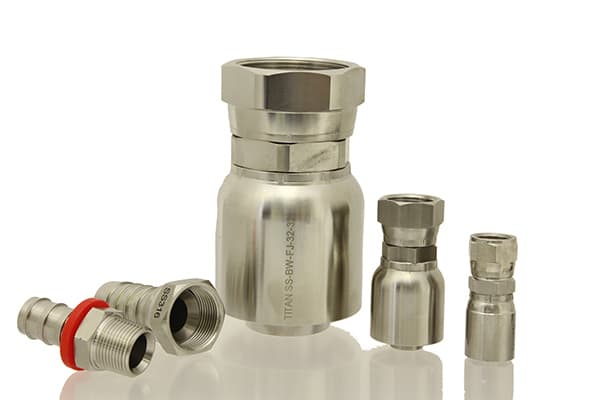Types of Steel to Manufacture Stainless Hose End Fittings

Image Description: An image showing hydraulic hose end fittings
Depending on the environment and the process they're involved in, hydraulic hose end fittings may experience different degrees of corrosion and degrade over time. Considering the harsh working environments of hydraulic systems in heavy machinery or plant equipment, many have had to rely on stainless steel as a viable option for these fittings for longevity and shorter downtimes during emergency maintenance.
Steel
The wide use of steel in our industries is a testament to its importance. It's largely composed of iron and carbon that account for its characteristic strength and toughness. Additional metals, like zinc, copper, chromium, manganese, and molybdenum, give it other properties like corrosion resistance and durability.
Stainless steel is one such variant of steel comprising mainly of carbon, iron, nickel, and chromium. The additional chromium in its metallurgy provides it with corrosion-resistant properties. Here are some commonly used grades for manufacturing hose end fittings.
304
The SAE 304, UNS 30400, and ASTM A276 are the common standards for this type of steel grade. It is the most commonly used grade of stainless steel, known as 18/8, throughout the industry. That's because its standards call for a minimum of 18% chromium and 8% nickel to be added during manufacturing.
It is easy to work with, giving the right combination of strength and flexibility that allows it to be rolled in sheets, formed into shape via presses, and used as stock for machining into final products. The zinc and chromium give it corrosion-resistance properties, forming an oxide layer on its surface to survive in harsh chemical environments. This also makes it easier to clean with tough chemicals, making it ideal for making sanitary hose end fittings for the food industry.
There is one drawback; however, 304 stainless steel is susceptible to chloride corrosion. This vulnerability makes it unsuitable for marine and offshore applications where high concentrations of chloride salts cause pitting on its surface and penetrate deeper into the steel to weaken its structure.
316
Luckily, other grades of steel exist that can combat chloride corrosion. 316 stainless steel variants are the most commonly used after 304 grades. Although 1.5 times costlier than 304-grade steel, it provides excellent corrosion resistance for hose end fittings.
Its chemical composition is similar to 304 steel; however, the additional element molybdenum deters chlorides from invading its surface and gives it thermal properties that make machining easier.
Which Stainless Steel Fitting Should You Select?
There exist many types of hose end fittings other than stainless steel ones like brass, aluminum, and carbon steel. The one you select depends on your budget, required hose service life, the process fluid carried, and the external environment. If the environment or fluid transported is particularly corrosive, then stainless steel hose end fittings are a requirement. Other metal fittings, although inexpensive, will corrode and affect the integrity of your hydraulic system. Stainless steel fittings can last longer, providing the same, if not more, value for money as ordinary fittings.